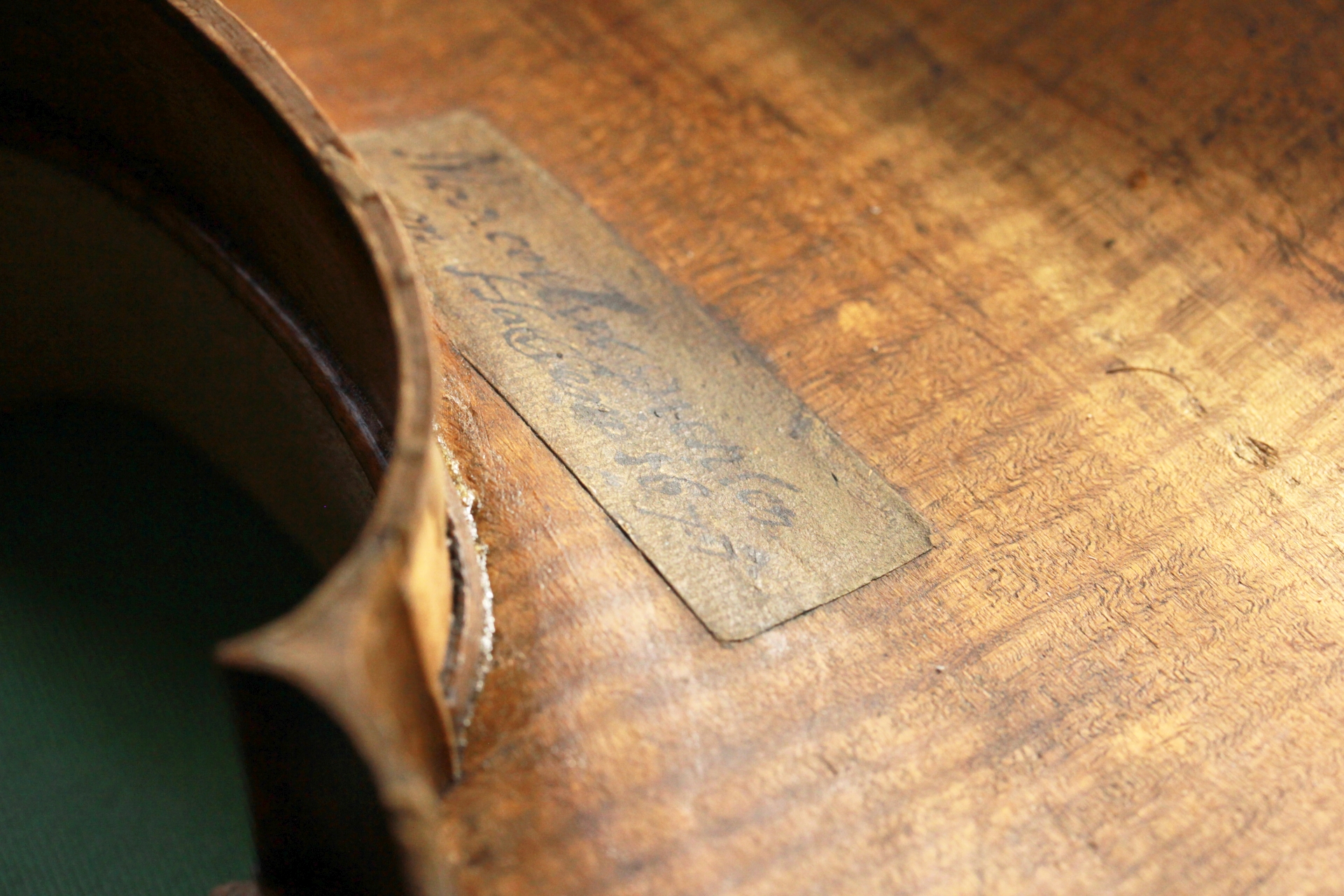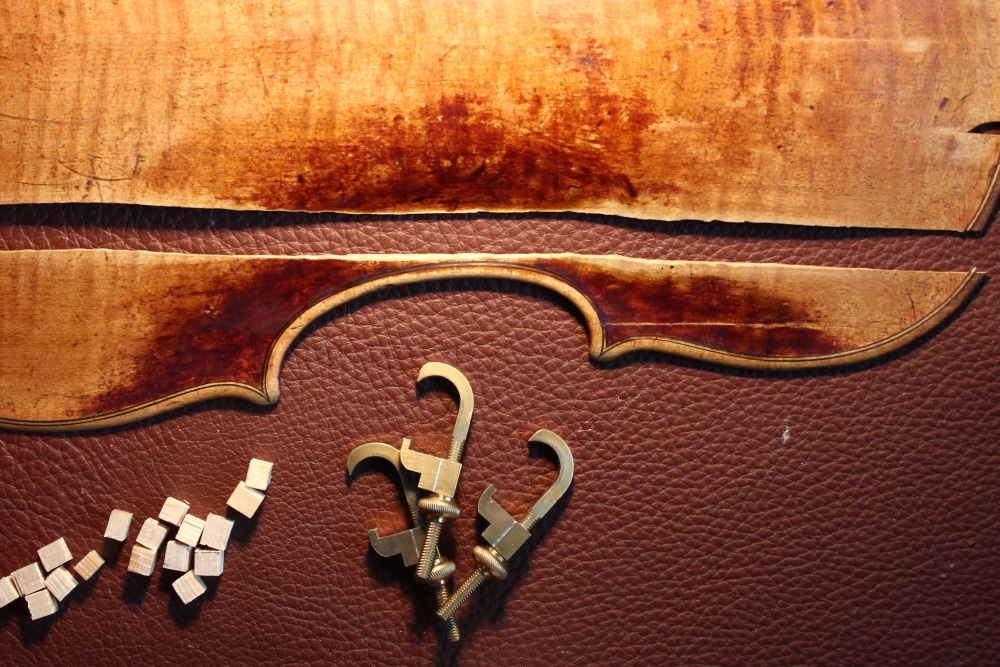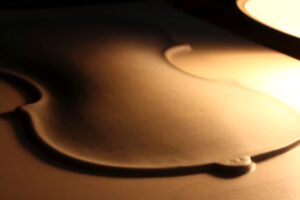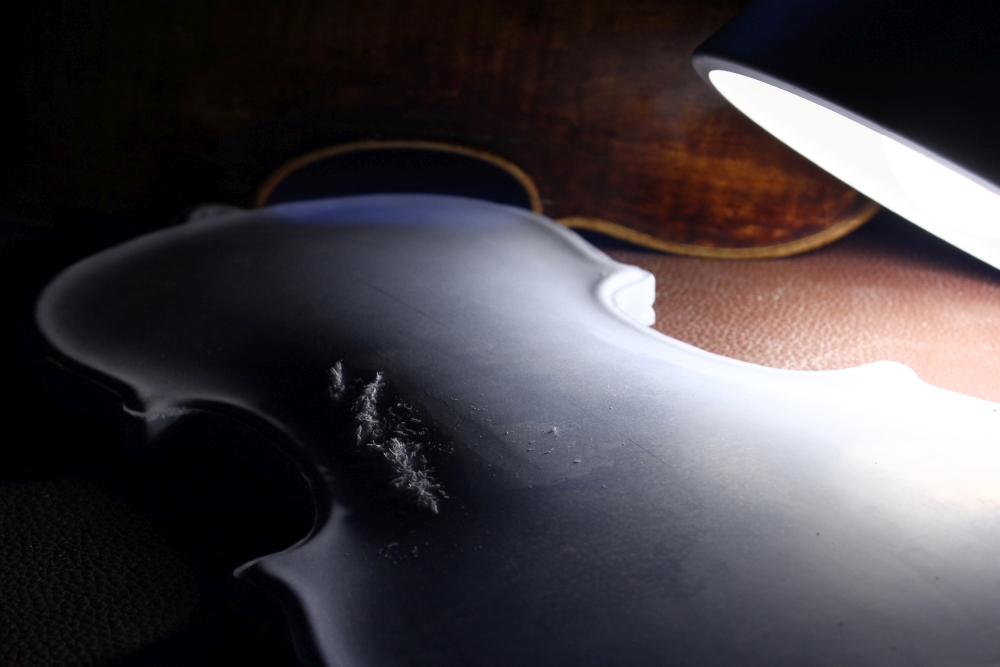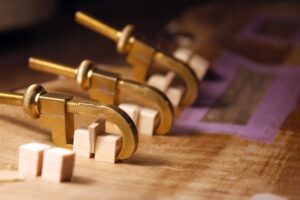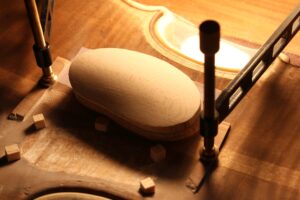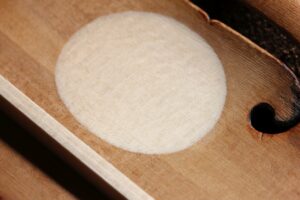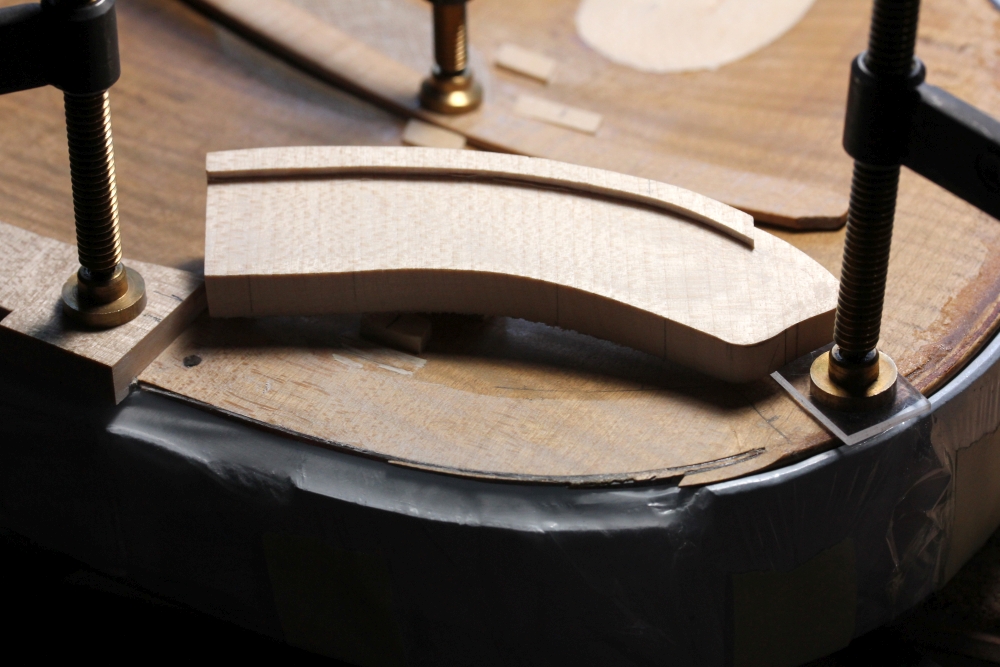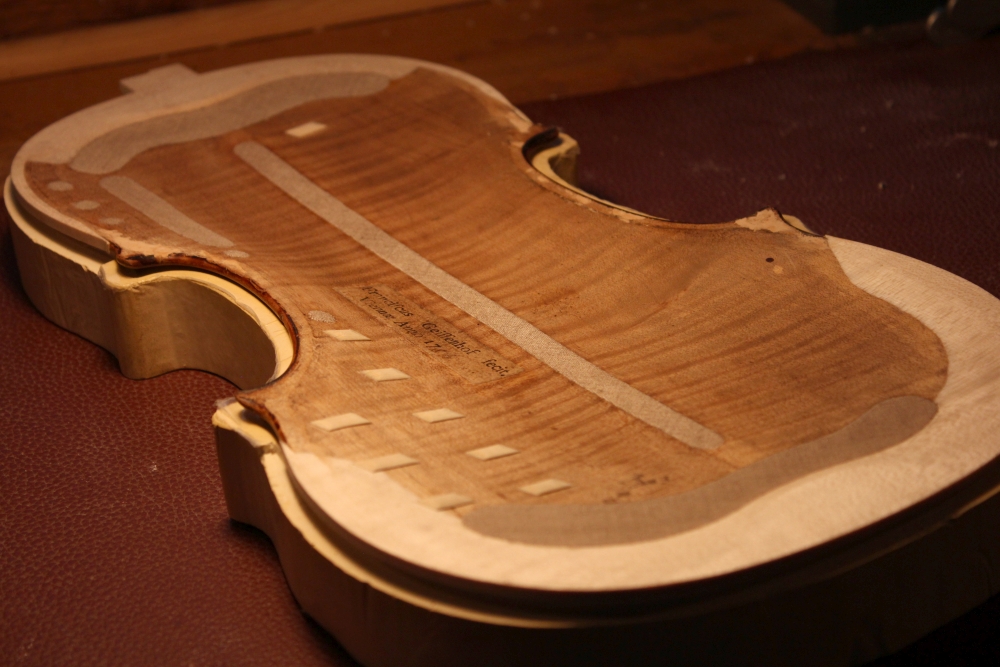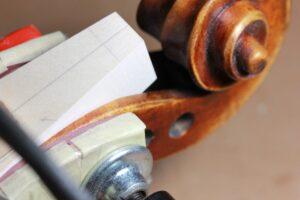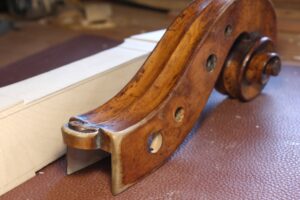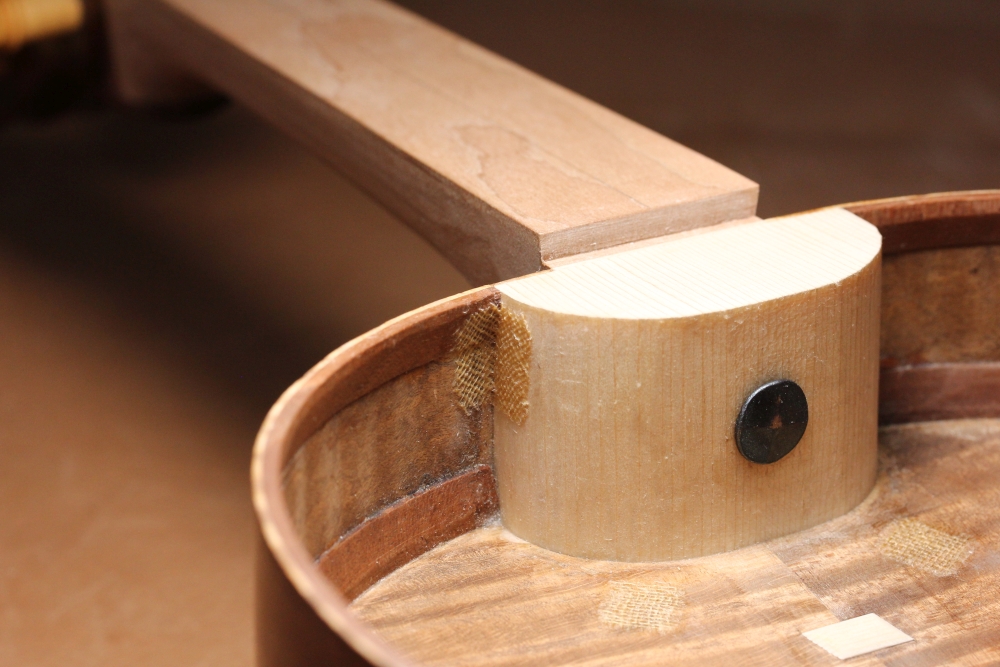With Devotion to Original & DETAIL
Elaborate restorations of antique string instruments are one focal point of my work. Gentle treatment and respect for the original substance are my natural guiding principles and require careful consideration of functional, aesthetic and conservation aspects.
Working steps in a restoration
In a complex restoration, individual working steps often intertwine and are, for instance:
- Cleaning of varnished surfaces and removing (distracting) retouching.
- Making negative and positive plaster casts of the archings of front and back, as well as other parts.
- Interventions on the archings by making corrections to the castings.
- Repairing old cracks by cleaning, gluing and filling.
- Renewing old or fitting new patches, e.g. doubling the edges, soundpost patches or fillings on the gluing surfaces.
- Replacing missing or severely damaged parts, e.g around the edges or purfling.
- Filling minor defects with varnish or other filling agents.
- Grafting and setting a new neck.
- Retouching of varnished surfaces and area of repair.
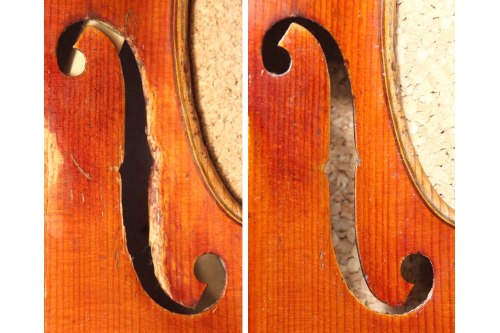
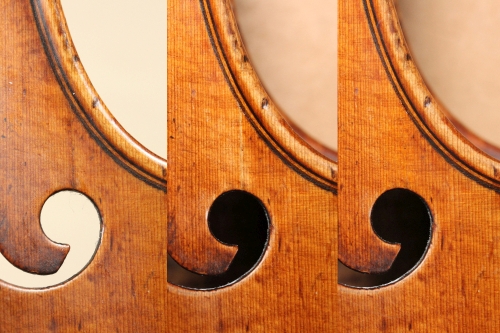
Restoration to an authentic playing condition
An extended concept of restoration – for historical instruments in good condition – can involve returning them to an authentic playing condition. This involves not only restoring the instrument structurally, but also functionally transfer it to a condition appropriate for its era. This intervention is extensive, affecting the bassbar, the side-view geometry of the instrument and the mounting parts, and requires great dedication and mutual trust. It promises success when questions in music history, playing technique and instrument specifics are considered together.
In these projects, I do not follow a rigid, unadaptable “formula”; this can be just as unsuccessful as in new making. Classification within the context of music history and playing technique provides initial guidance for my considerations. Study of the sources and, if possible, originally preserved instruments or parts thereof, often in consultation with collections, museums, or colleagues, further guide the parameters. However, sensorical sensitivity for the specific instrument and its condition and characteristics ultimately determine in detail what is possible and sensible. I consider this to be essential, as no comparative instrument can be an original of the instrument being restored.
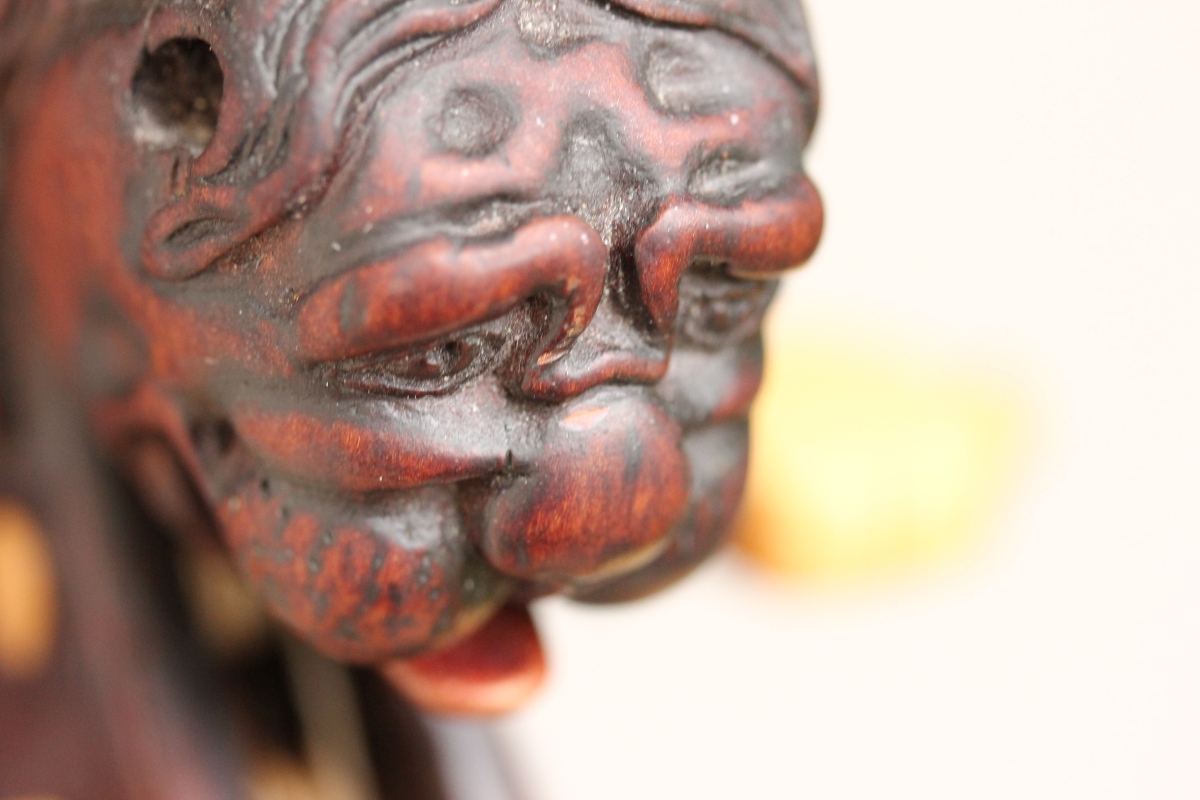
Project in the showcase
Jacob Stainer, “ex William-Corbett”: Restoration to an authentic playing condition
During a restoration I like to stay in continous contact with you. When it comes to detailing aspects of playing technique and sound, I gladly take your wishes into account.
All work and interventions are documented and, upon request, summarized in a technical report.
Please feel free to contact me for a non-binding informational meeting and viewing of your instrument.
